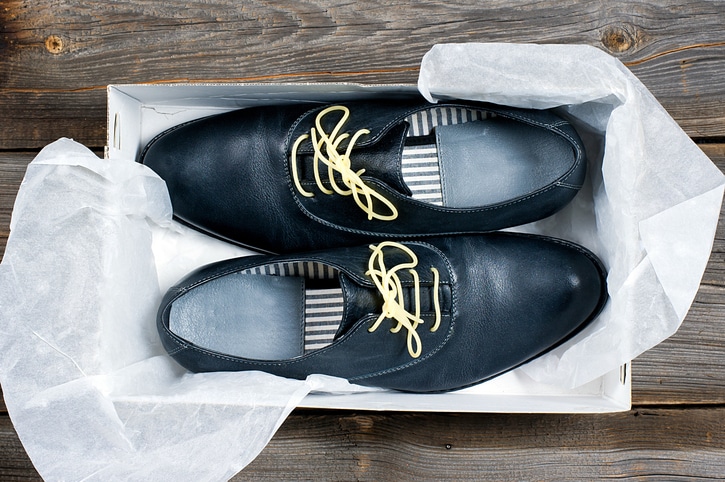Only a very small percentage of us are born with foot problems. But by the time we are adults, 75% of Americans have some kind of foot ailment.
What happens? Shoes happen. Most foot problems are caused by ill-fitting shoes.1
Buying the right shoes is not just an investment in foot health… It’s crucial to your entire body. Your feet are the foundation of your biomechanics. Ill-fitting shoes cause your feet to be out of balance, which in turn can lead to knee, hip, and back problems.2
Women are more affected than men. After age 60, 70% of women develop osteoarthritis of the feet. Women experience foot problems four times more often than men.
In many cases, foot pain makes walking so difficult that women become sedentary. This can lead to a myriad of health problems, including obesity, diabetes, heart disease, osteoporosis, and premature aging.3
Recommended for You: Trick Your Body into Thinking it’s 25 Years Old Again
Turn fat to muscle…firm up skin…get a better memory…boost your energy…and improve your mood with this “age rewind.” It copies a prescription treatment doctors use to reprogram older bodies to work like a young adult. But THIS way is all natural. It’s inexpensive. There’s no doctor required. And you can do it at home. Go HERE for details.
Why are women’s feet in such bad shape? It’s because nine out of 10 wear shoes that are too small. And women walk an average of three miles more per day than men. High heels add to the problem.4
If you are diabetic, poor fitting shoes can actually kill you. Recent research has found that foot infections lead to most of the annual 65,000 foot or leg amputations in diabetic Americans. Half of diabetics who undergo amputation die within 5 years—a worse mortality rate than most cancers.5
Never Do These Four Things When Buying Shoes
It seems like a simple thing to buy shoes that fit. Simply try them on, and if they feel comfortable, buy them. But it can be more complicated than that.
Here are four common mistakes people make when shopping for shoes:
They shoe shop in the morning. Your feet expand during the day. Shop at the end of the day, when your foot is at its largest.6
They believe their shoe size has stayed the same through adulthood. As we get older, our feet get bigger. But we just go on buying the same size for years. The result? Tight shoes that cause foot problems. This typically strikes in middle age. Always get your feet measured when you buy shoes.7
They measure only one foot. About 60% of the population has one foot that is bigger than the other. Usually, this is the left foot.8 When the difference is a full size or larger, you need shoes in two different sizes. Many stores now recognize this and have adopted “split size” policies for people who need differently sized shoes. Nordstrom, Birkenstock, and Healthy Feet Store are three examples.9
They select shoes by the size marked on the box. Sizes vary from one manufacturer to another. Different brands fit differently. You need to try them on.10
Here are other shoe shopping tips:
When trying on shoes, make sure you wear the same thickness of sock that you intend to wear with the shoe.
The upper portion of the shoe should be made from soft, flexible materials so it can mold to the shape of your foot as you walk.
The shoe should not ride up and down your heel as you walk.
Be sure the shoe bends at the toe box and that the ball of your foot rests comfortably in the widest area of the toe box.
To avoid plantar fasciitis, make sure there is sufficient arch support.11
Limit Your Time Wearing These Three Kinds of Shoes
Flip-flops. Many people love the simplicity. But they offer little protection from cuts and splinters. Most flip-flops provide no arch support and can lead to plantar fasciitis, and knee, hip, and back pain. People with diabetes should never wear flip-flops or sandals. Simple cuts and scrapes can lead to serious complications.12
Ballet Flats. Women love them for the same reason they like flip-flops—ease and simplicity. But they provide no arch support and can cause similar medical problems as flip-flops. They are actually worse, since the sole tends to be thinner and provides very little cushioning.13
Wedges. They have rigid, slanted foot beds. This throws off the biomechanics of walking because the shoe does not allow the foot to bend normally. This leads to an unnatural gait. A flatter platform or less slanted wedge shoe is better.
For overall health, the best shoe is one with a sturdy sole that provides good cushion and arch support.
One more thing… Most women know that high heels are bad for their feet. If you still want to wear them, don’t go higher than two inches. And the wider the heel, the better.14
Like this Article? Forward this article here or Share on Facebook.
References:
1http://www.foot.com/site/professional/foot-facts
2http://www.medicinenet.com/script/main/art.asp?articlekey=22534
3http://www.foot.com/site/professional/foot-facts
4http://www.webmd.com/pain-management/ss/slideshow-worst-shoes-for-your-feet
5http://bottomlineinc.com/foot-infection-the-diabetes-complication-that-kills-more-people-than-most-cancers/
6http://www.medicinenet.com/script/main/art.asp?articlekey=22534
7http://www.thehealthsite.com/diseases-conditions/how-your-shoes-could-be-ruining-your-health/
8http://www.abilityhacker.com/where-to-buy-shoes-when-your-feet-are-two-different-sizes/
9http://www.healthyfeetstore.com/different-sized-feet.html
10http://www.medicinenet.com/script/main/art.asp?articlekey=22534
11http://www.webmd.com/pain-management/ss/slideshow-worst-shoes-for-your-feet
12http://www.huffingtonpost.com/2014/04/15/shoes-hurting-your-feet_n_5074182.html
13http://www.webmd.com/pain-management/ss/slideshow-worst-shoes-for-your-feet
14https://www.ncbi.nlm.nih.gov/pubmed/16988571

